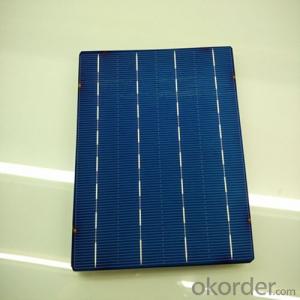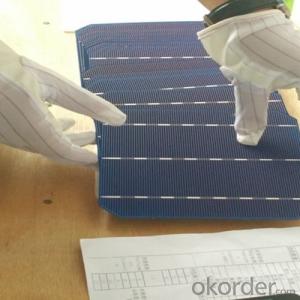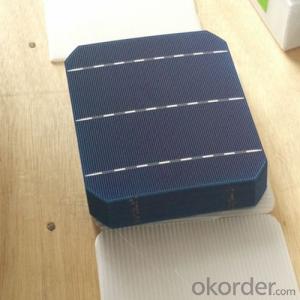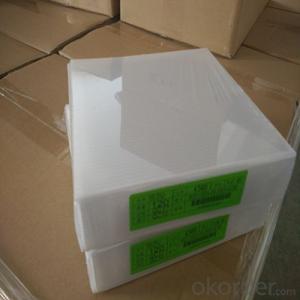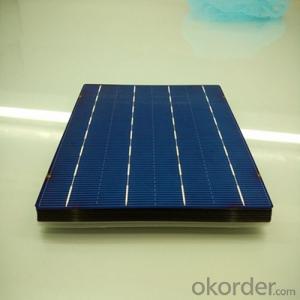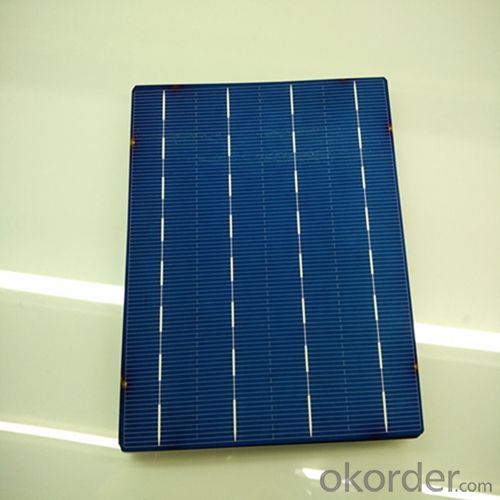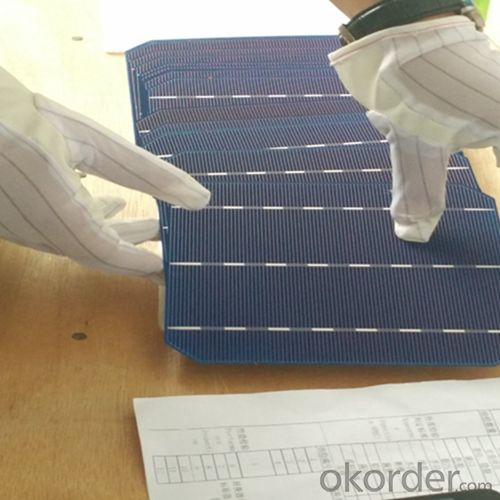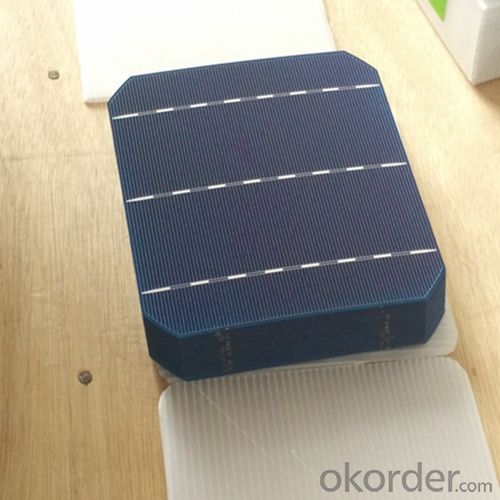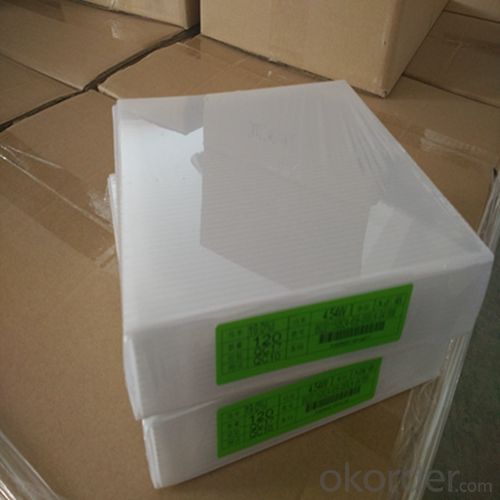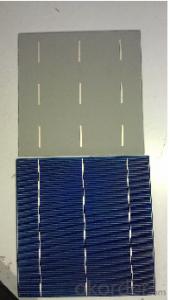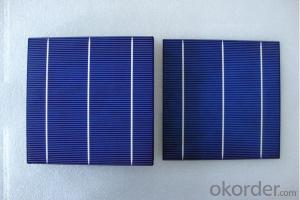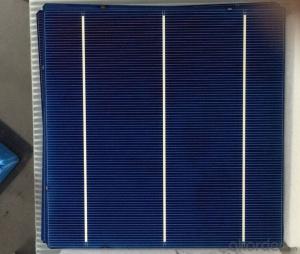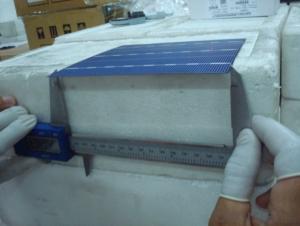Bulk Heterojunction Organic Solar Cells - Poly 156x156mm2 Solar Cells Made in Class BB
- Loading Port:
- Shanghai
- Payment Terms:
- TT OR LC
- Min Order Qty:
- 6500 watt
- Supply Capability:
- 6000000 watt/month
OKorder Service Pledge
OKorder Financial Service
You Might Also Like
The operation of a photovoltaic (PV) cell requires 3 basic attributes:
The absorption of light, generating either electron-hole pairs or excitons.
The separation of charge carriers of opposite types.
The separate extraction of those carriers to an external circuit.
In contrast, a solar thermal collector supplies heat by absorbing sunlight, for the purpose of either direct heating or indirect electrical power generation from heat. A "photoelectrolytic cell" (photoelectrochemical cell), on the other hand, refers either to a type of photovoltaic cell (like that developed by Edmond Becquerel and modern dye-sensitized solar cells), or to a device that splits water directly into hydrogen and oxygen using only solar illumination.Characteristic of Mono 156X156MM2 Solar Cells
You are gaining energy independence - add battery backup power for even greater energy security
The cost of electricity is only going to rise – insure against that rising cost
Adaptive cells change their absorption/reflection characteristics depending to respond to environmental conditions. An adaptive material responds to the intensity and angle of incident light. At the part of the cell where the light is most intense, the cell surface changes from reflective to adaptive, allowing the light to penetrate the cell. The other parts of the cell remain reflective increasing the retention of the absorbed light within the cell.[67]
In 2014 a system that combined an adaptive surface with a glass substrate that redirect the absorbed to a light absorber on the edges of the sheet. The system also included an array of fixed lenses/mirrors to concentrate light onto the adaptive surface. As the day continues, the concentrated light moves along the surface of the cell. That surface switches from reflective to adaptive when the light is most concentrated and back to reflective after the light moves along
Mechanical data and design
Format | 156mm x 156mm±0.5mm |
Thickness | 210μm±40μm |
Front(-) | 1.5mm bus bar (silver),blue anti-reflection coating (silicon nitride) |
Back (+) | 2.5mm wide soldering pads (sliver) back surface field (aluminium) |
Temperature Coefficient of Cells
Voc. Temp.coef.%/K | -0.35% |
Isc. Temp.coef .%/K | +0.024%/K |
Pm.Temp.coef. %/K | -0.47%/K |
Electrical Characteristic
Effiency(%) | Pmpp(W) | Umpp(V) | Impp(A) | Uoc(V) | Isc(A) | FF(%) |
18.35 | 4.384 | 0.526 | 8.333 | 0.63 | 8.877 | 78.39% |
18.20 | 4.349 | 0.526 | 8.263 | 0.63 | 8.789 | 78.54% |
18.05 | 4.313 | 0.525 | 8.216 | 0.63 | 8.741 | 78.32% |
17.90 | 4.277 | 0.524 | 8.161 | 0.625 | 8.713 | 78.04% |
17.75 | 4.241 | 0.523 | 8.116 | 0.625 | 8.678 | 77.70% |
17.60 | 4.206 | 0.521 | 8.073 | 0.625 | 8.657 | 77.36% |
17.45 | 4.170 | 0.519 | 8.039 | 0.625 | 8.633 | 76.92% |
17.30 | 4.134 | 0.517 | 8.004 | 0.625 | 8.622 | 76.59% |
17.15 | 4.096 | 0.516 | 7.938 | 0.625 | 8.537 | 76.80% |
17.00 | 4.062 | 0.512 | 7.933 | 0.625 | 8.531 | 76.18% |
16.75 | 4.002 | 0.511 | 7.828 | 0.625 | 8.499 | 75.34% |
16.50 | 3.940 | 0.510 | 7.731 | 0.625 | 8.484 | 74.36% |
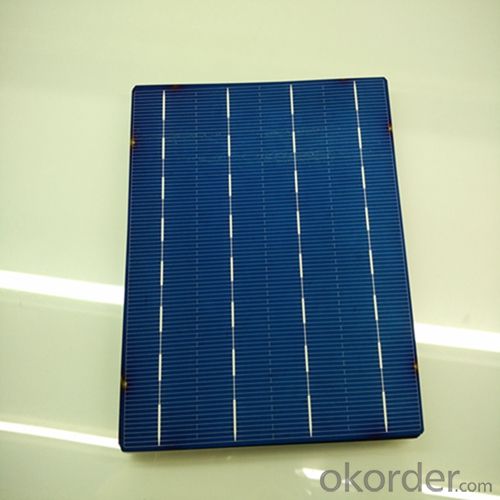
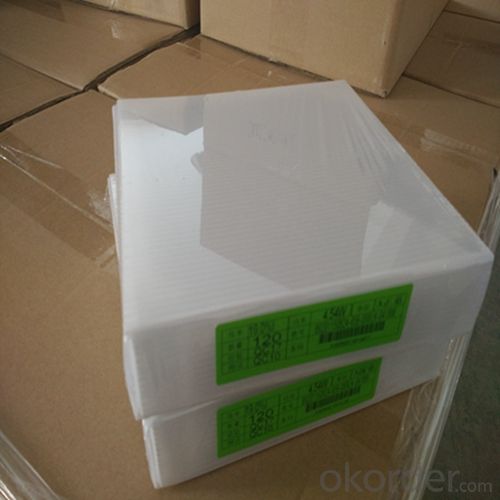
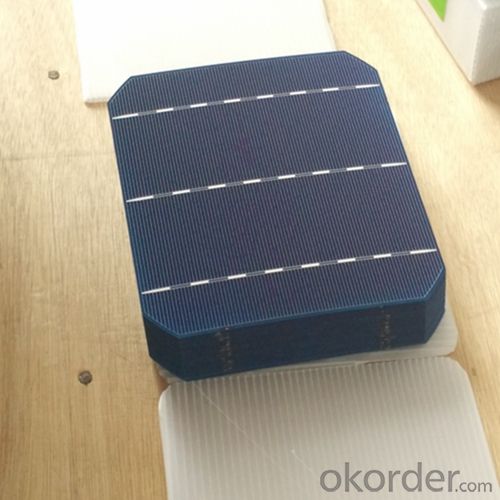
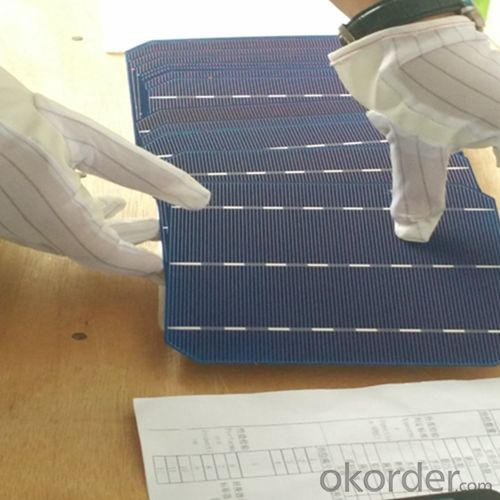
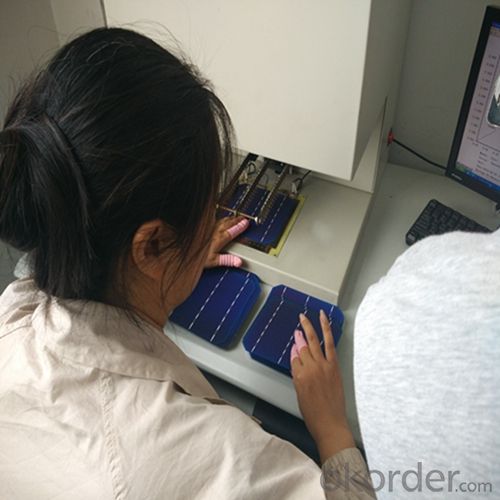 FAQ
FAQ
Q: What price for each watt?
A: It depends on the quantity, delivery date and payment terms, generally Large Quantity and Low Price
Q: What is your size for each module? Can you tell me the Parameter of your module?
A: We have different series of panels in different output, both c-Si and a-Si. Please take the specification sheet for your reference.
Q: What is your size for each module? Can you tell me the Parameter of your module?
A: We have different series of panels in different output, both c-Si and a-Si. Please take the specification sheet for your reference.
- Q: What is the role of trackers in solar cell systems?
- The role of trackers in solar cell systems is to maximize the efficiency of energy production by optimizing the positioning of solar panels to track the movement of the sun throughout the day. This allows the solar panels to receive maximum sunlight exposure, ultimately increasing the overall energy output of the system.
- Q: Can I buy solar cells easily online?
- I don't know about solar cells, but I do know you can buy solar panels online.
- Q: Can solar cells be used in agriculture for irrigation?
- Yes, solar cells can be used in agriculture for irrigation. Solar-powered irrigation systems can efficiently harness solar energy to pump water from wells, rivers, or other sources, reducing the dependency on fossil fuels and electricity. This sustainable solution can help farmers irrigate their fields and crops, especially in remote areas with limited access to electricity grids.
- Q: How are solar cells affected by temperature?
- Solar cells are affected by temperature in that higher temperatures can decrease their efficiency and power output.
- Q: How do solar cells handle snow or ice buildup?
- Solar cells do not handle snow or ice buildup well as they rely on sunlight to generate electricity. When covered with snow or ice, solar cells are unable to effectively convert sunlight into energy. However, some solar panels are designed with a tilt or smooth surface to help the snow slide off easily, and in certain cases, heating elements or manual cleaning may be used to remove snow or ice from the surface of the cells.
- Q: Can solar cells be used on mobile devices?
- Yes, solar cells can be used on mobile devices. Many smartphones and other mobile devices now come with built-in solar panels or have the capability to be charged using external solar panels. This allows users to harness solar energy to charge their devices, providing a sustainable and eco-friendly alternative to traditional charging methods.
- Q: Can anybody tell me the power supply of the home solar cell?
- Hard to say, because you didn't mention how many electrical home appliances you are going to run in one time at home. Nobody would be able to give you a right answer.
- Q: How much energy can a solar cell produce?
- The amount of energy a solar cell can produce depends on various factors such as the size and efficiency of the cell, the intensity and duration of sunlight, and any potential shading or obstructions. On average, a standard solar cell can generate around 10-20% of the sunlight it receives into usable electricity. However, advancements in technology continue to improve the efficiency of solar cells, pushing the boundaries of energy production higher.
- Q: Can solar cells be used in indoor applications?
- Yes, solar cells can be used in indoor applications. While they are typically designed for outdoor use to harness sunlight, indoor solar cells can still generate electricity from artificial light sources such as fluorescent or LED lights. However, the efficiency of indoor solar cells is generally lower compared to outdoor usage due to the lower intensity and variability of indoor lighting.
- Q: Can solar cells be used in public transportation?
- Yes, solar cells can be used in public transportation. Solar panels can be installed on the roofs of buses, trains, and trams to generate electricity from sunlight. This renewable energy can be used to power various systems in public transportation, such as lighting, air conditioning, and even charging onboard devices. Additionally, solar cells can also be used to charge electric vehicles used in public transportation, reducing reliance on fossil fuels and contributing to a more sustainable transportation system.
Send your message to us
Bulk Heterojunction Organic Solar Cells - Poly 156x156mm2 Solar Cells Made in Class BB
- Loading Port:
- Shanghai
- Payment Terms:
- TT OR LC
- Min Order Qty:
- 6500 watt
- Supply Capability:
- 6000000 watt/month
OKorder Service Pledge
OKorder Financial Service
Similar products
Hot products
Hot Searches
Related keywords
